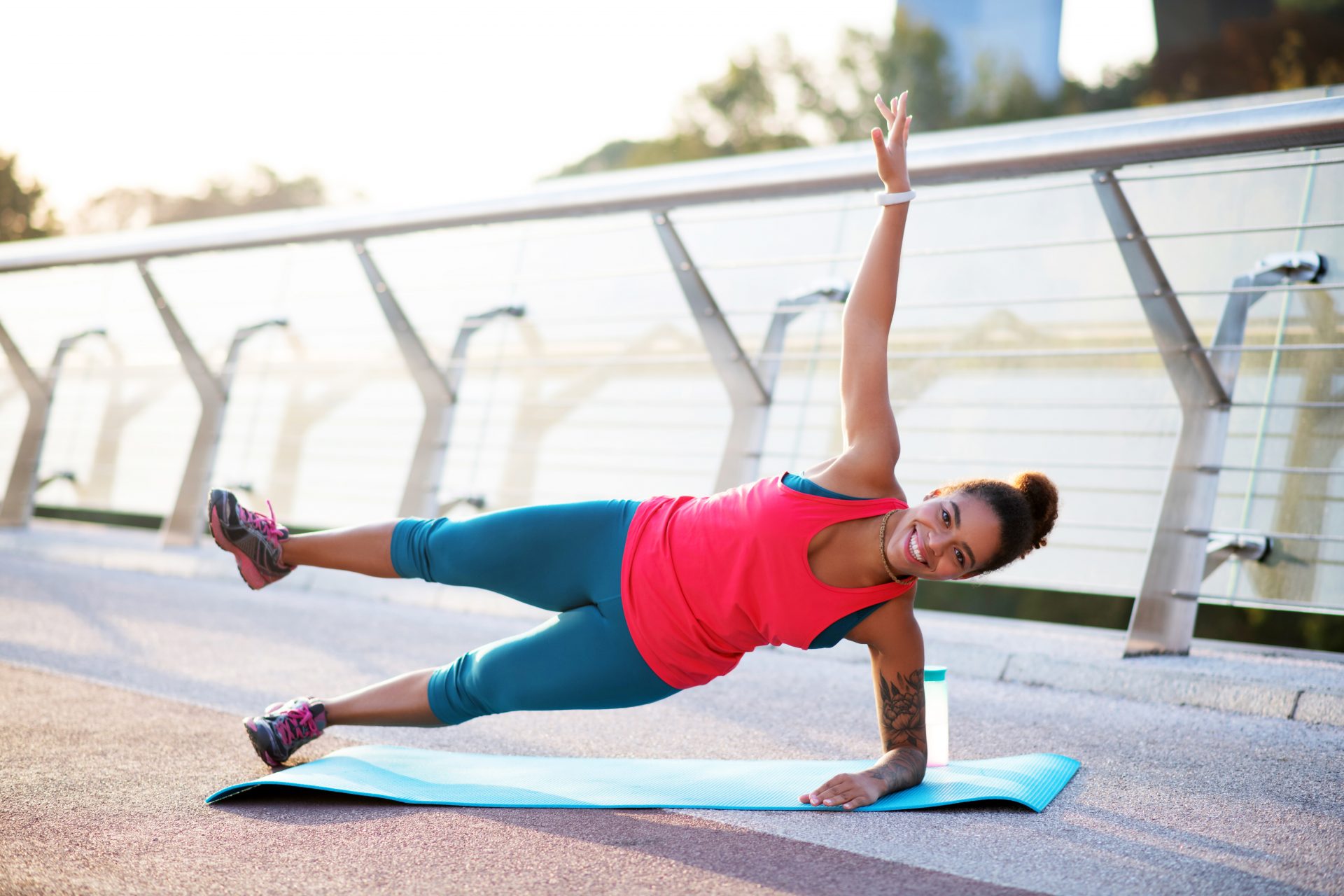“I did 2 simple inner thigh exercises every day for a week – and noticed a real difference”
Forget everything you think you know about ‘inner thigh workouts’ – writer Chloe Gray sets out the case for firing up the adductors.
Forget all the weird diet culture messaging you associate with the phrase ‘inner thigh workout’. Just like every other part of your body, strengthening your adductors – the muscles that run along the inside of your thighs – is massively important, yet many of us fail to do it.
Fitness trainer Emma Obayuvana explains: “Your adductor muscles play a crucial role in stabilising the leg as it moves forwards and backward, and are imperative in supporting lateral leg movement. They stabilise your hips, knees and back, and strengthening them will improve performance in your training and reduce risk of injury.”
I’ve learnt this the hard way. I used to ignore this part of my body in my training to the extent that a physio once told me that the muscles were so weak that they weren’t properly stabilising my joints at all. Given my history of weak ankles and recurring tendonitis, it seems obvious that there must be a link. There is: and it’s one backed by a study from earlier this year that found hip adductor strength is an important factor for improving ankle mobility and reducing lower-limb injury risk.
You may also like
Back pain: “Adding these 4 hip mobility exercises to my workout routine reduced my lower back pain”
The real question is just how long does it take to start feeling the effects of adductor training? They’re such key muscles but the vast majority of lower body exercises don’t touch them, so I wonder whether you can make a difference in a short amount of time.
With that in mind, I’ve decided to set myself a mini challenge – to do adductor moves every day for a week and see how much stronger I feel afterwards.
The best inner thigh exercises for joint health
To find the right exercises to include in my challenge, I’ve been digging into the research. A 2020 paper reported that isometric adductor strength is an important part of avoiding future injuries, while a review from 2009 into adductor strength noted that poor flexibility of the muscles also put people at risk of muscle strains and aches.
Adductor plank
I hit upon two exercises to perform every day that will help to build both isometric and functional strength. First up is an adductor plank. These are essentially a side plank, but with the bottom leg lifted off the floor and the top leg pressing into a bench, box or sofa. It uses your adductor strength to keep you off the ground, holding there for 30 seconds at a time.
You may also like
How to do a side plank correctly, according to a trainer
Cossack squat
The second is a cossack squat, which will both strengthen and stretch those adductors. For this, you begin in a wide sumo stance then lower your hips to the floor by bending one knee and keeping the other leg straight out to the side. You’ll stretch the inner thigh muscles as you go deep into the position and you’ll be strengthening the adductors as you use them to squeeze back to the standing position.
I decide to perform these moves with my bodyweight alone so I can do them on the days I don’t go to the gym but Obayuvana also recommends doing them with equipment like lateral sliders, and adding in sumo deadlifts and glute bridges with a ball or foam roller held between your knees that you can squeeze as you lift.
The inner thigh exercise challenge
I make a tactical error on the first day of the challenge – leaving my inner thigh exercises until the end. After a lower body workout of hip thrusts, back squats and split squats, I wobble my way through the cossack lunges and pant as I hold the adductor plank. It’s a humbling reminder that bodyweight moves can be really tough (especially if they’re new).
From then on, I swear to do my inner thigh exercises at the beginning of my workout – or on rest days – so that I can get the most of out of them.
On day two, I wake up with killer DOMS. The intense ache runs from my groin down to my knees. I’m shocked that I’m so sore after just two sets of bodyweight moves – although perhaps that’s only to be expected when doing exercises that our muscles aren’t used to.
The thought of doing cossack squats and planks while crippled with muscle soreness is hardly inviting, but this time I do them as part of my warm-up before an upper body workout, and while it’s just as painful as I think it’ll be, stretching the adductors out during the squats does help to ease the tightness and pain.
By day three, the DOMS are still there. It’s a rest day but I’m preparing for a morning stretch. Firing up my inner thighs before moving through other hip-focused exercises seems to improve my range of motion, particularly when doing 90/90 stretches as the adductors are responsible for that type of internal hip rotation.
By day four, I’m in the swing of things and able to move deeper into the cossack squats without pain. When I go for a swim, it feels like my inner thighs are actually playing their part in pushing me through the water, making it slightly easier work for my quads and glutes.
On the fifth day, I go for a long walk and, for the first time in ages, experience no ankle pain. On day six, I do a workout class that just so happens to include cossack squats in the circuit and I’m surprised by how strong and stable I feel when moving quickly through the exercises.

While I haven’t built real muscle strength from seven days of the movement, I do undoubtedly feel like my ankle is more stable and my hips are more mobile. That might be because I’ve ‘woken up’ the under-used muscles, says Obayuvana. “Activating weaker muscles helps them to fire when they’re used – think of it as ‘switching them on’ so they’re ready for exercise,” she explains.
After a week of engaging my inner thighs, I’ve started to understand how important they are for stabilising my body. While I won’t continue to do adductor moves every day, I’ll definitely be doing this sort of activation before long walks or lower body workouts to improve my joint health. Having all of your muscles work in harmony really does pay off.
Images: Getty
Source: Read Full Article
